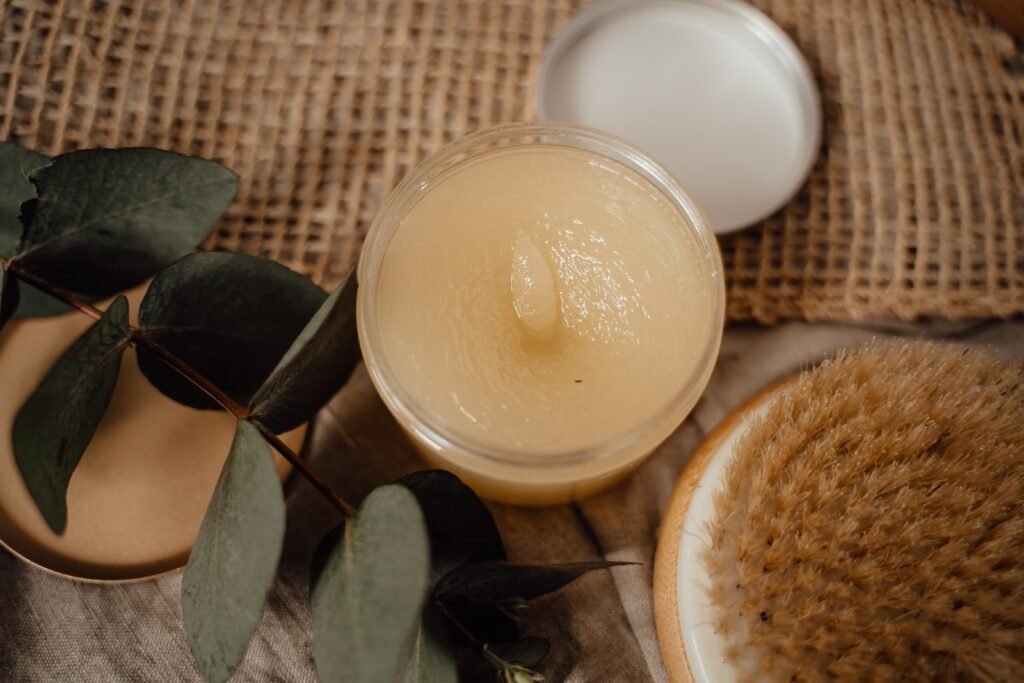Exfoliating the skin is an important part of any skin care regimen, regardless of your skin type. It helps to slough away dead skin cells that can clog pores and lead to breakouts as well as dry, patchy and/or dull-looking skin. Exfoliation also helps to improve the absorption of topical products. Certain products can also help to lift away dry or damaged skin and reveal a brighter, smoother complexion. With so many choices when it comes to exfoliation, understanding the right product and scrub for your skin is key.

What is Exfoliation?
Exfoliation involves scrubbing away the upper layer of dead skin to reveal the new, healthy skin beneath. It is a crucial part of skin care and often gets ignored. There are two main types of exfoliants- physical and chemical. Physical exfoliants, such as scrubs and brushes, work by mechanically removing the top layer of skin cells using a textured or abrasive material, while chemical exfoliants use ingredients such as alpha-hydroxy acids (AHA) and beta hydroxy acids (BHA) to break down and dissolve top layers of skin.
Exfoliating the skin is an important part of any skin care regimen, regardless of your skin type.
Types of Exfoliants
When it comes to exfoliating your skin, there are plenty of choices. Physical exfoliants can come in the form of scrubs, brushes, gloves, or buffers. Chemical exfoliants, on the other hand, are usually lotions or serums that contain acids that break down the top layer of skin.
How to Choose the Right Scrub for Your Skin Type
Regardless of skin type, it is important to choose a gentle, non-abrasive scrub that won’t irritate or damage your skin. People with dry skin should choose physical exfoliants that contain nourishing oils. People with oily skin should pick a product formulated with salicylic acid or glycolic acid. For acne-prone skin, physical scrubs with gentle particles should be used. For aging skin, look for an exfoliant that contains natural botanical extracts that can help to boost collagen production.
Regardless of skin type, it is important to choose a gentle, non-abrasive scrub that won’t irritate or damage your skin.
When to Exfoliate
It is important to exfoliate no more than once or twice a week, depending on your skin type. If you are using a physical scrub with beads or microbeads, try to be gentle as not to be too abrasive or cause irritation. Exfoliation can also be done with a gentle scrub or sponge and warm water.
It is important to exfoliate no more than once or twice a week, depending on your skin type.
Benefits of Exfoliating
The benefits of exfoliating the skin are numerous. Not only does it slough away dead skin cells and reveal a brighter, smoother skin, it can also help to reduce the appearance of fine lines and wrinkles, improve cellular turnover and elasticity, reduce hyperpigmentation and dark spots, and smooth out acne scars. It can also help to deeply cleanse the skin by removing excess oil and any dirt or debris.
Conclusion
Exfoliating the skin is an important part of any skin care routine and can help to reveal brighter and healthier looking skin. With so many choices when it comes to exfoliating products, it can be difficult to know which one to choose. It is important to choose a product that is appropriate for your skin type and that won’t be too abrasive. Additionally, exfoliation should be done no more than once or twice a week, depending on your skin type. With the right product and gentle scrubbing, you can take advantage of the numerous benefits that exfoliation has to offer.

